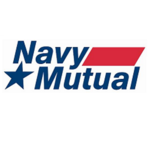The sea services see themselves moving toward a future where they are just as likely to perform a mission with an unmanned platform as a manned one, based on the specifics of the mission and what assets are available. A third of the Navy’s fleet and half of Marine Corps aviation could be unmanned under this hybrid vision the two services are pursuing, which they argue in a new Department of the Navy Unmanned Campaign Framework is necessary to stay ahead of adversary capabilities without breaking the bank.
However, achieving this vision will require the services to buck the budgeting system in a way they haven’t had to before: they can’t just develop and buy new unmanned aircraft, surface vessels and underwater vehicles, but they’ll also need to invest in enablers like artificial intelligence and machine learning, networks, data standards, command and control systems and more – which will require constant focus from top leadership to ensure that these less tangible spending items don’t fall through the cracks in a platform-centric budget process.



 Drones
Drones



